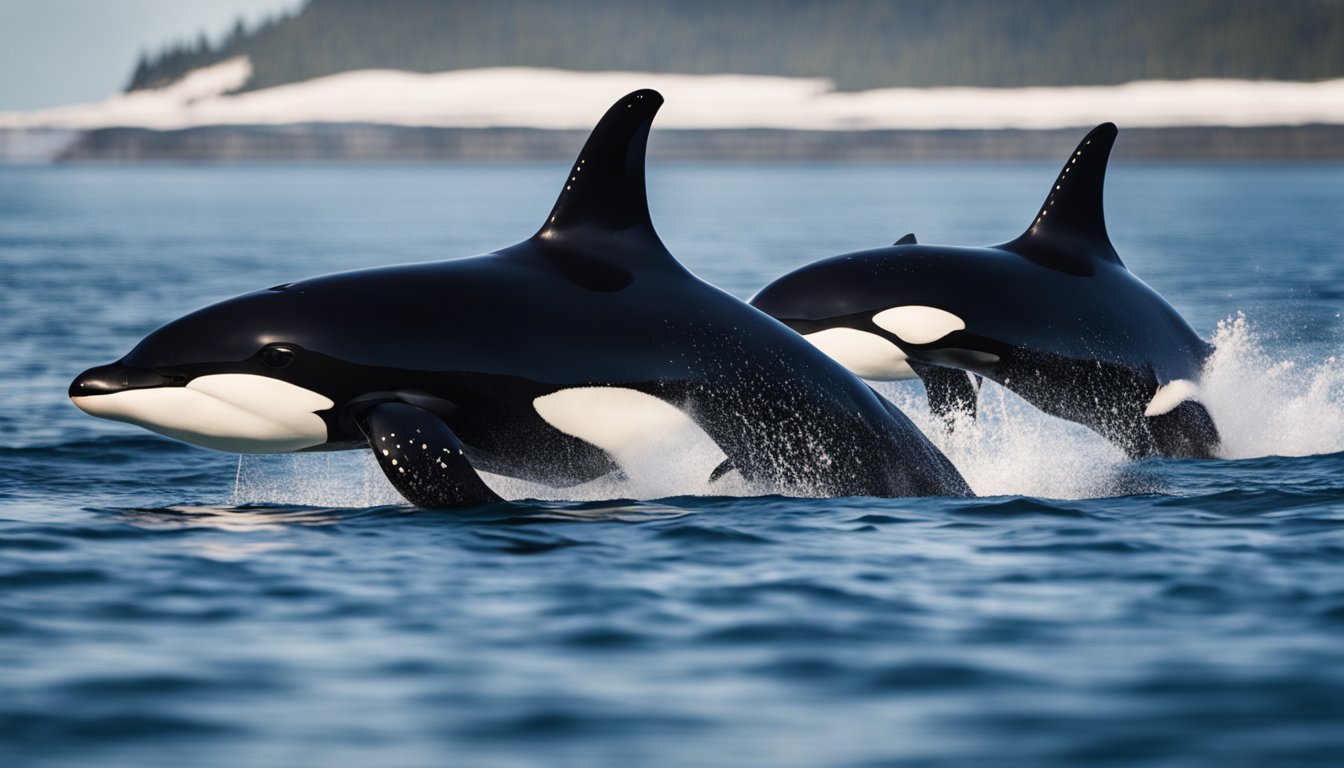
30 interesting facts about orcas
- 👁️ 308
Orcas, also known as killer whales, are one of the ocean’s most powerful and enigmatic creatures. With their striking black and white coloring, formidable intelligence, and complex social structures, they have fascinated humans for centuries. Orcas are apex predators, meaning they are at the top of the food chain, and have no natural predators. They inhabit all the world’s oceans, from the Arctic and Antarctic regions to tropical seas. Orcas are not only known for their impressive hunting techniques but also for their diverse vocal behaviors and strong family bonds. Here are 30 interesting and informative facts about orcas that showcase their incredible abilities and the depth of their existence in the marine world.
- Orcas are the largest species of the dolphin family.
- They can live up to 80 to 90 years in the wild, with females generally living longer than males.
- Orcas have a diverse diet, including fish, seals, and sometimes larger whales.
- Their black and white coloring is thought to be a form of camouflage known as disruptive coloration.
- Orcas use sophisticated hunting techniques, including herding and beaching themselves to catch prey.
- They have one of the most complex languages among animals, with distinct dialects for different pods.
- Orcas are found in every ocean in the world, making them one of the most widespread marine mammals.
- Male orcas can grow up to 32 feet in length, making them one of the ocean’s largest predators.
- Orcas have a brain that is four times heavier than the human brain, indicating high intelligence.
- They are known for their impressive jumps and acrobatic maneuvers in the water.
- Each orca pod has its own unique culture, including hunting techniques and vocalizations.
- Orcas have no natural predators, placing them at the top of the food chain.
- The dorsal fin of a male orca can stand up to 6 feet tall.
- Orcas can swim at speeds of up to 34 miles per hour.
- They are social animals, living in groups called pods, which can contain up to 40 individuals.
- The bond between orca mothers and their offspring can last a lifetime.
- Orcas use echolocation to communicate and hunt, emitting sounds that bounce off objects to determine their location.
- They are one of the few animals known to experience menopause, with females stopping reproduction in their 30s to 40s but living decades beyond.
- Some orca populations are considered endangered due to threats like pollution, declining prey populations, and capture for marine parks.
- Orcas have been observed exhibiting cooperative hunting behaviors, sometimes even sharing food among pod members.
- Each orca has a unique saddle patch, a gray shape near the dorsal fin, which helps researchers identify individuals.
- The gestation period for an orca is approximately 17 months.
- Orcas have been known to show empathy, with reports of them helping humans and other animals in distress.
- There are at least 10 distinct orca ecotypes, each with its own prey preferences, vocal behaviors, and habitat ranges.
- Despite their nickname “killer whale,” there are no confirmed attacks on humans in the wild.
- Some orca populations are matrilineal, meaning that lineage and inheritance pass through the female line.
- The name “orca” comes from the Roman name for the species, Orcinus orca, which translates to “belonging to Orcus” – Orcus was a Roman god of the underworld.
- They can hold their breath for up to 15 minutes while diving.
- Orcas have been featured prominently in mythology and folklore of indigenous cultures, often revered as powerful totems.
- Research indicates that orcas have distinct personalities, with traits such as playfulness, cheerfulness, and sociability being observed.
Orcas, with their majestic presence and complex behaviors, continue to captivate the world’s imagination. These marine giants symbolize the wild beauty of the oceans and remind us of the importance of conservation efforts to protect their natural habitats. Through learning about orcas, we gain not only insights into their fascinating world but also a deeper appreciation for the intricate balance of marine ecosystems. Their existence challenges us to coexist respectfully with the remarkable creatures that share our planet.
Orcas, also known as killer whales, are one of the ocean’s most powerful and enigmatic creatures. With their striking black and white coloring, formidable intelligence, and complex social structures, they have fascinated humans for centuries. Orcas are apex predators, meaning they are at the top of the food chain, and…